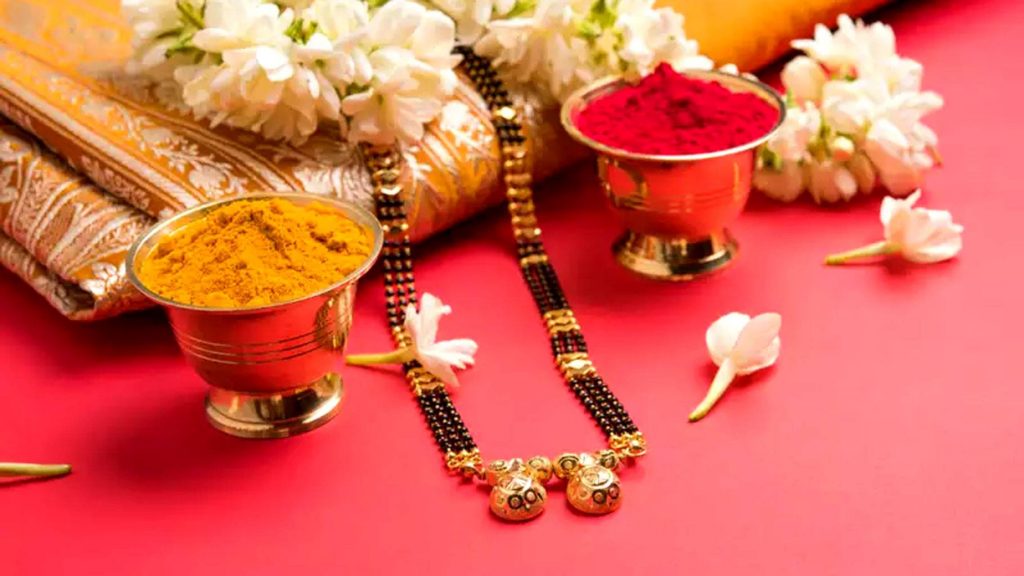Why Do Women Need Indicators of Marriage While Men Don’t?

This is an instance that happened to a married woman working in South India. Her co-workers were surprised that she was married. “Why? There are no indicators for marriage?” One of the male co-workers asked her. This was when she was already wearing a wedding chain, taali. But for them, the indicators of marriage, as in a sindoor mark, should stand out strikingly and long that can be seen even from a distance.
May it be sindoor, mangalsutra, taali all married Indian women are supposed to wear some indicators that they are married. For some areas of south India, it is the toe ring that indicates that you are married, and in West Bengal, it is the white and red bangles named sankha pola. Every region has its own traditions to show a woman is married.
At the same time, we have no indicator for men. In the west, both men and women wear a ring to show their marital status. But that tradition is not there here in India. Rarely, some Indians follow that rule, but not all. There is no way to know if a man is married or not, whereas in most households the sindoor is a must. Or at the very least the wedding chain (Mangalsutra or taali) is very much of a necessity.
Some women even can never think of taking off their wedding chain even to take a bath. It is conditioned to them that taking off the wedding chain is a bad omen and will bring some misfortune to their husbands. The logic of this argument is nowhere present. Some women just simply keep the wedding chain always on them because that is the social norm, and they will have to face many questions and prejudices if they dared to take it off even for a day.
The origin of the wedding chain and sindoor goes back to centuries and women in India have been subjected to this social norm since always. And though many modern women have discarded the use of sindoor, the wedding chain is still worn religiously by most Hindu Indian Women.
The purpose of these indicators had always been the same, to visually represent that a woman is married. That she is out of bounds for other men. She should not even be remotely coveted by another man. This is directly proportional to the term ‘purity’ that is often attached to women. If another man approaches or even remotely desires a married woman, her purity is at stake. And nobody wants to risk that. That is why these big visual indicators indicate that a woman is out of bounds.
But if a married woman is out of bounds, isn’t a married man also out of bounds? Shouldn’t he have some indicator that he is married? But we do not expect women to desire a man, or even if she does the man is not attached with any ‘purity’ for him to feel threatened. He is a free human who does not need a visual or tangible bond with his wife.
So do these marriage indicators put women in a lesser position than their husbands? Yes. It is indeed your choice if you should wear a marriage chain and sindoor or not. But why should you when it is just a regressive tradition that you are conditioned to follow?
However, millions of Indian women still keep following these social norms of marriage indicators not even realizing that these are means to make her a less free human being than her husband. For them that ‘ek chhutki sindoor’ is their identity and image. Since these traditions are deep-rooted in India’s culture and many women even romanticize these indicators, we cannot say when these marriage indicators will go out of fashion.
– Poorna Krishnan









